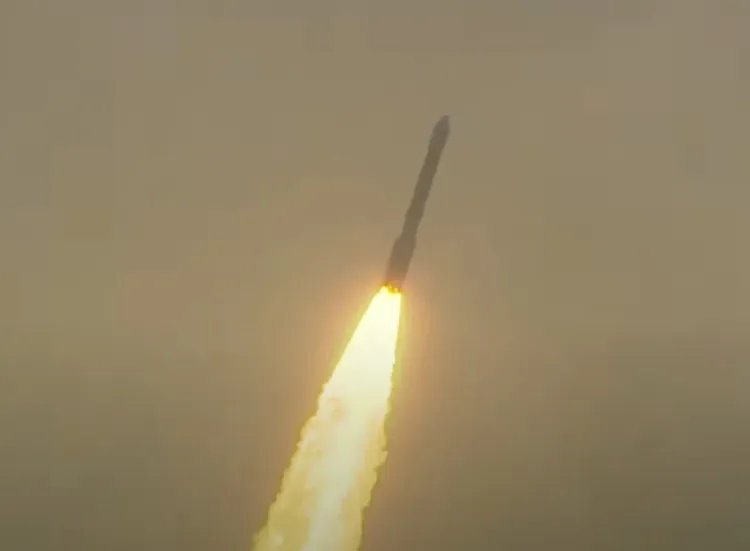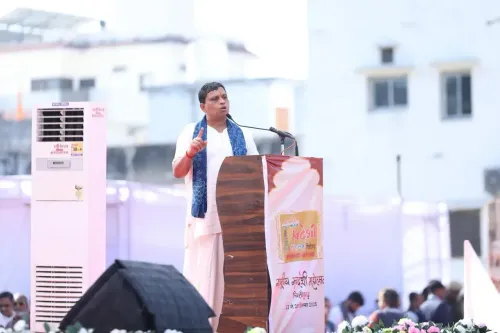What Went Wrong with ISRO’s EOS-09 Launch?

Synopsis
Key Takeaways
- ISRO's PSLV-C61 mission faced a technical issue in the third stage.
- The EOS-09 satellite was intended for critical remote sensing applications.
- ISRO will conduct an analysis before future launches.
- Third-stage performance is crucial for satellite deployment.
- Continued investment in space technology is essential for success.
Sriharikota (Andhra Pradesh), May 18 (NationPress) The Indian Space Research Organisation (ISRO) encountered a significant challenge on Sunday during its 101st mission, PSLV-C61, which was tasked with launching the EOS-09 satellite. Unfortunately, a technical issue arose within the launch vehicle, resulting in mission failure and the inability to deploy the satellite successfully.
The indigenous PSLV, known as the Polar Satellite Launch Vehicle -- PSLV-C61 -- took off from the Satish Dhawan Space Centre in Sriharikota with the objective of positioning EOS-09 into a Sun Synchronous Polar Orbit (SSPO).
While the initial two stages of the launch proceeded without incident, ISRO Chairman Dr. V. Narayanan reported that an unforeseen problem emerged during the third stage, hindering the satellite's successful deployment.
Dr. Narayanan stated, "Today, we aimed for the 101st launch from Sriharikota, launching the PSLV-C61 with the EOS-09 mission. The PSLV is a four-stage launch vehicle, and performance was normal up to the second stage. The third stage motor ignited flawlessly; however, an anomaly was detected during its operation, which prevented mission completion successfully..."
He added, "We will return post-analysis."
ISRO also provided an update on X, noting: "Today, the 101st launch was attempted; the PSLV-C61 performed normally until the second stage. Due to an observation in the third stage, the mission could not be completed."
The third stage of the PSLV is a solid rocket motor designed to deliver substantial thrust during the upper atmosphere phase of the flight, achieving a maximum thrust of 240 kilonewtons. This stage is vital in placing the satellite into its designated orbit.
The EOS-09 satellite was intended to offer continuous and reliable remote sensing data for various operational applications, including border surveillance, national security, agriculture, forestry, flood monitoring, and disaster management. For this mission, the PSLV was set to carry a satellite weighing 1,710 kg into a sun-synchronous orbit to guarantee consistent lighting for Earth observation.
Additionally, the mission aimed to foster sustainability and promote responsible space operations. EOS-09 was a duplicate satellite similar to EOS-04, launched in 2022, designed to provide remote sensing data for operational applications while enhancing observation frequency.










